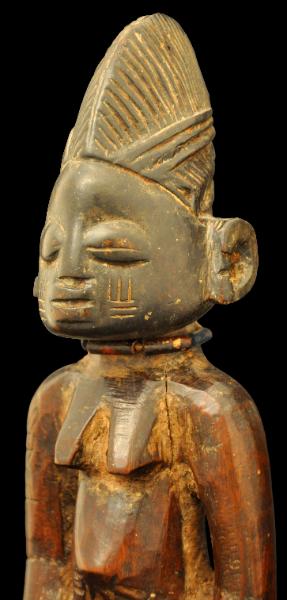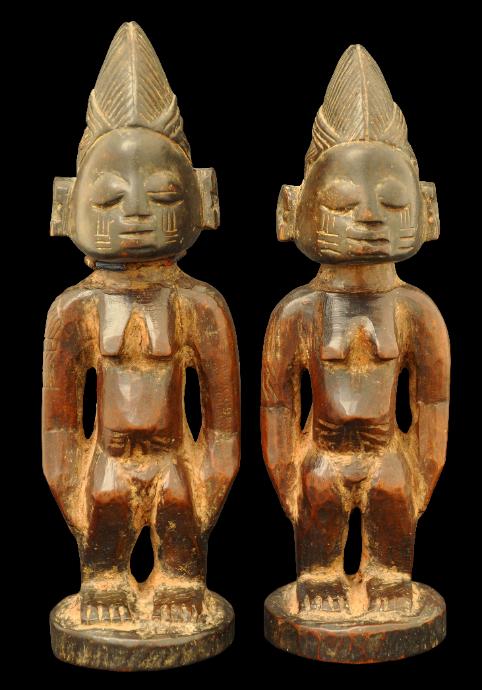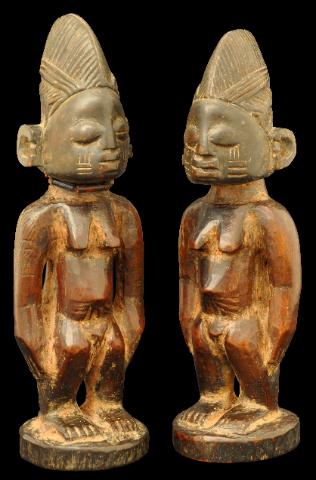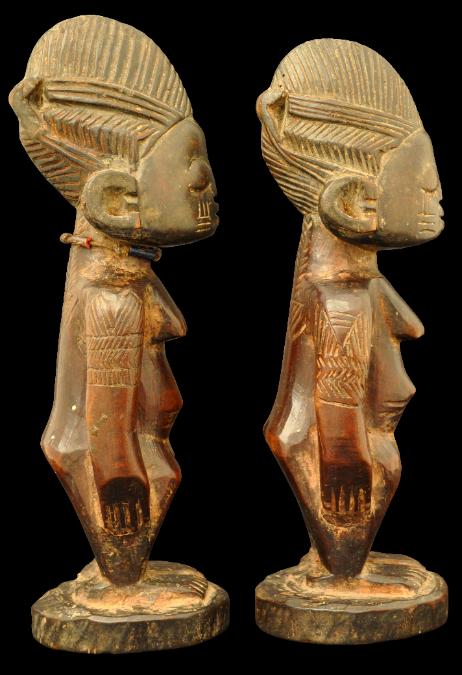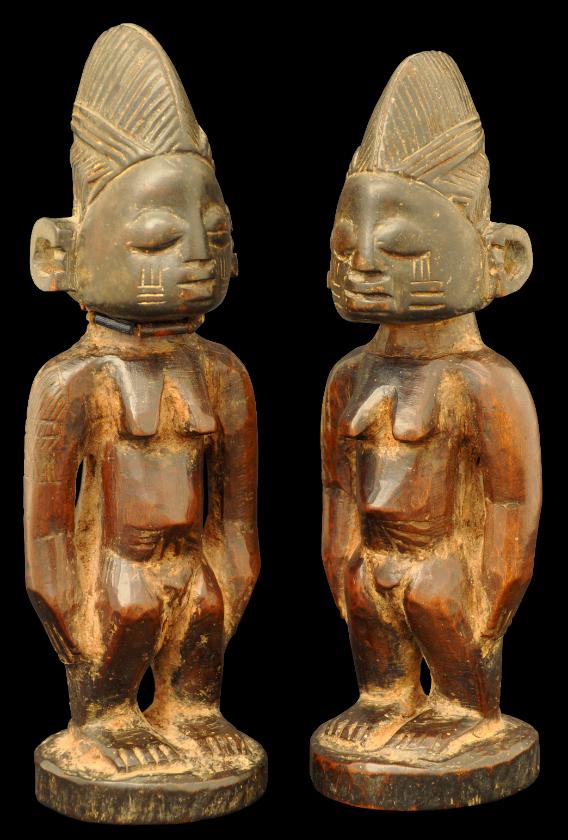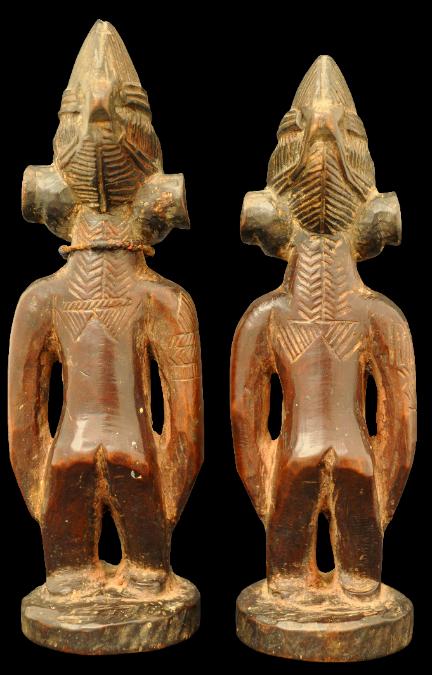
Yoruba Twins
Rare Pair of Female Ibeji Figures (Ere Ibeji)
Ibadan Region,
Owu-Yoruba people, Nigeria
19th century
height: 24cm & 25cm, width: approximately 7cm each
Ere Ibeji
is a combination of Yoruba words: ere ‘sacred image’, ibi ‘born’ and eji ‘two’. These Ere Ibeji figures have delightful facial expressions. Their eyes are almond-shaped, bulging and closed. Closed eyes are an unusual feature in Yoruba art. They have strong noses with flared nostrils. Their full lips are slightly curved and appear to be smiling. They have very prominent and protruding jaw lines. They have large and strong semi-circular ears. Their facial expressions are serene.
These
Ere Ibeji figures are unusual because their proportions are anatomically quite accurate, even though they are supposed to represent infants. The outlines of their bodies are characterised by a distinctive angular carving style. They have the mature features, such as the full breasts, full bottoms, pubic hair and prominent female genitals. They stand with their hands on their hips, and slightly lean forward. They have strong arms and strong legs. Their upper thighs are unusually thick and recede to the ankles. Their feet are large. They are each standing on a round base.
A set of scarifications, called
Àbàjà Olówu, is on each cheek. Àbàjà Olówu consists of three vertical lines (pélé) on top of three horizontal ones (àbàjà). This particular set of scarifications is commonly associated with the people of the ancient kingdom of Òwu. Scarification can also be found on the back of their necks, underneath their belly buttons and peculiarly on their right arms.
The triangular head is also aesthetically of Òwu style. According to the Yoruba beliefs, the head is where the spirit resides. Therefore, carvers usually put a lot of thoughts into carving the size and the shape of the head, which determine one’s destiny and success.
Both
ibeji figures have the same semi-crescent coiffure. Their coiffures are decorated with plaited hair that runs from the top of the forehead to the back of the head, and some finely carved tresses of hair on both sides. The sides are also decorated with finely carved bands of chevron patterns.
The taller
ibeji figure wears a necklace, which composed of dark blue and red beads.
Traces of
tukula powder can still be found on certain parts of their bodies. Tukula powder was grounded from tukula wood and used for both cosmetic purposes and as protection from insects and from the sun. Tukula was also believed to have healing properties and magical powers.
These
Ere Ibeji figures have significant age and a corresponding dark, glossy patina. They are in fine condition.
Yoruba people have the highest dizygotic (non-identical) twinning rate in the world. The births of twins amongst Yoruba women are four times more likely than anywhere else in the world. Unfortunately, the mortality rate of the twins also is very high. Ere Ibeji figures were carved as spiritual representations of the twins who died. These figures were commissioned from village carvers, who were also often highly trained priests (
Babalawo). They images were carved as adults, rather than as the deceased infants. It is common in African sculpture that child features in carving are more mature, including elaborate coiffures, scarifications on the face, fully developed breasts (on female figures), pubic hair and prominent genitalia. They were usually placed on a shrine dedicated to Elegba (a divine messenger deity) in the living area of the house and fed, bathed and dressed regularly. These figures were particularly special to the mother, who kept them close to her and caressed the figures in a loving manner, hence the wear that genuinely old examples exhibit.
References
Bacquart, J. B.,
The Tribal Arts of Africa, Thames & Hudson, 1998.
Finch, C., Finch & Co,
Autumn 2006 – Catalogue No. 9, Finch & Co., 2006.
Fagg, W. and J. Pemberton, J.,
Yoruba: Sculpture of West Africa, Collins, 1982.
Rowland, A., H.J. Drewal, and J. Pemberton,
Yoruba: Art and Aesthetics, Museum Rietberg, Zurich, 1991.
Provenance
ex-Erez Yardeni collection.
Inventory no.: 2356
SOLD

